#The Eponymous Collection of Stories
Text
⚠️Vote for whomever YOU DO NOT KNOW⚠️‼️

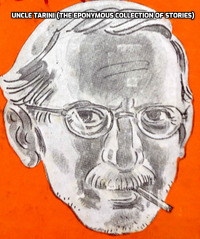
Click on images for labels
Vote under the cut if you read the rules
#Sorry these lat two polls are going up late. I just kinda forgot to make them#ultimate obscure blorbo#polls#round 7#The Extraordinary Service Executive (Teens in the Universe)#The Extraordinary Service Executive#Teens in the Universe#TitU#Uncle Tarini (The Eponymous Collection of Stories)#Uncle Tarini#The Eponymous Collection of Stories
89 notes
·
View notes
Text
Currently rereading Eric Flint's 1632 and reflecting on just how influential Flint was to me and my approach to both praxis and politics as a teenager. I found Flint when I was about thirteen or fourteen, around the time I found Pratchett I think, and he's left an equally wide thumbprint on my soul. Isn't that the most wonderful thing about stories, that people you've never met can help shape our adult selves? Mother of Demons I often recommend for its SFF worldbuilding--Flint built a species with at least four genders, only some of which are reproductive, and associated "normal" sexual orientations, and then proceeded to write in a textually intersex character and queer the hell out of it.
1632, though, is the one where a little West Virginia town in 2000 gets picked up and dropped in the middle of Thuringia, Germany in the eponymous year--right in the middle of the Thirty Years War. The local United Mine Workers of America chapter plays a major role, particularly its head.
As I write this I'm listening to the scene where the little town of Grantville, having admitted after a few days that they are probably not ever going home, is crowded into the high school gymnasium listening to the mayor lay that reality out and suggesting an interim council to help the town set out a sort of constitutional convention so they can work out what on earth they're going to do moving forward--especially since there's a bunch of displaced refugees collecting in the forests nearby. Sensible of them, really; the Americans murdered the shit out of the local soldiers that displaced them, on account of how the shaken mine workers that went out to figure out WTF happened not being super down with suddenly running into a bunch of fuckheads raping the locals and torturing people to find out where their valuables might be. After that, said Americans proceeded to retreat into the town boundaries and gibber quietly to themselves. I would go lurk in their woods, too.
Anyway, the mayor sets up this proposal, everyone agrees, and a CEO who was visiting for his son's wedding at the time steps forward and says: look. I know how to lead, and I'm probably the most qualified person here. I lead a major industry corporation effectively and I did that after my time as a Navy officer. I put myself forward because I'm qualified. Now, we're going to need to circle the wagons to get through the winter, tighten our belts, but we can get through this. We can't support all these refugees, though; we'll have to seal the border so they can't bring disease--they're a drain on our resources we can't afford--
and the UMWA guy, he gets really mad listening to this. There's this Sephardic refugee woman he's real taken with who got swept up in the town first thing, and she's sitting in and listening; he's thinking about throwing her out, thinking about how much she knows about the place they're found in, and he's furious. But he gets a good grip on his anger and he marches up and he says, look. This dude has been here two days and he's already talking about downsizing?! You're going to listen to this CEO talking about cuts, cuts, cuts? Nah. Trying to circle the wagons is probably impossible, it's stupid, and if you think my men and I are going to enforce that, you can fuck off. That proposal is inside out and bass ackwards. We've got about a six mile diameter of Grantville here; how much food do YOU think we're going to grow? How about the soldiers wandering around, do you think we're going to be able to fight armies off on our lonesome? Look at the few refugees we already have in the room, they'll tell you how those armies will treat you! We could do it for a while, the amount of gun nuts here, but so what? We don't have enough people to shoot them! Not if we're going to do anything else to keep us going! We have about six months of stockpiled coal to keep going, and without another source or getting the coal mines working, we're screwed. We have technical strength but we don't have the supplies or resources we would need to maintain it. Those refugees? They're resources. We need people to do the work we will need to keep ourselves. The hell with downsizing; let's grow outwards! Bring people in, give them safety, see what they can bring to the table once they've had a moment! He invokes: send us your tired, your poor!, and the CEO yells in frustration: this isn't America! so he yells back "it will be!"
And of course everyone cheers. I love Flint for many reasons but he is unapologetic about affection for the America of ideals--ideals, he freely admits, that are often honored in the breach rather than the observance, ideals that are messy and flawed, but nevertheless ideals that can work to inspire us to become the best version of ourselves. For Flint, history is as valuable as a source of stories to inspire ourselves as it is a repository of knowledge, and on this I tend to agree with him. We must learn from our moments of shame but equally we must learn from moments that show us how to be our best selves.
It's been twenty three years and the text is now an interesting historical document in its own right, hitting points and rhythms in beats that are sometimes out of place today. It's not perfect. But the novel contains a commitment to joy and to emphasizing the leaps of faith and understanding that regular, everyday people make every day to try and support each other that I routinely try to match in my writing.
Anyway, one of the strengths of the novel, I think, is its gender politics: it's a very ensemble kind of novel, lots of characters, and it's preoccupied with positive masculinity in a lot of ways. There's a lot of these hyper masculine characters--Mike Stearns perhaps more than anyone else--and--and...
... And Flint's characterization of Stearns, as he sketches out who the man is--his pivotal American leader, ex boxer, working class organizer, big man.... well, it lands equally on "he is delighted and astonished to find a local woman who quickly assesses how the cushion of air in tires works," and "he considers who to set up a Jewish refugee in the middle of Germany up with and he thinks to ask the Jewish family he grew up with to host her and her ill father because he thinks she'll be most comfortable there", and "he views people as potential assets rather than potential drains." A younger man asks him for advice on whether to pursue a professional sports career because of the boxing and he says no, you're in the worst place of not being quite good enough and you'll blow out your knees without accomplishing safety. He frames that interaction such that he allows his own experiences to make him vulnerable and invite the younger man to understand when a struggle have worth it.
It's actually a really deft portrayal of intense masculinity that also makes a virtue of a bunch of traits more usually associated with women: empathy, relational sensitivity, the ability to listen. As a blueprint for what a positive masculinity can look like, vs the toxic kind, it's very well done. I think sometimes when we look at gender roles in terms of virtues, and when masculinity is defined in terms of opposition to femininity, people get lost by arguing that virtues assigned to one gender are somehow antithetical to another gender. In fact that's never been the case: virtues are wholly neutral and can appear in any gender. What the gender does is inflect the ways we expect that virtue to appear in terms of individuals' actions within their society.
Gender isn't purely an individual trait, basically; it's a product of our collective associations. Two characters with different genders can display the same virtues and strengths, but we imagine them expressed in different ways according to our cultural expectations around gender. And I just think that's neat.
952 notes
·
View notes
Text
Tamamizu Monogatari, a unique love story

This article, unlike most of my recent longer pieces, was not planned in advance. I learned about the subject very recently, and instantly realized I absolutely have to introduce it to more people, the previously posted schedule be damned.
The Tale of Tamamizu (玉水物語, Tamamizu Monogatari) is a story about a fox turning into a human, but a rather unconventional one, filled with an unusual degree of sympathy for the eponymous protagonist and focused on a rather unique relationship. In addition to summarizing it in detail and explaining the possible inspirations behind it, I will also try to explain why the tale found a new life on social media as a, broadly speaking, lgbt narrative, and why I think there is a compelling case to be made for such an interpretation.
Unless stated otherwise, all images used through the article are taken from the Kyoto University Rare Materials Digital Archive, on whose website you can view scans of the original Tamamizu Monogatari.
The Tale of Tamamizu, also known as The Contest of Autumn Leaves (Momiji Awase) is an example of otogi-zōshi, illustrated prose narrative. The story was presumably originally composed in the Muromachi period (1335-1573), and it survives in multiple copies dated either to the early Edo period or to the end of the Japanese “middle ages” directly preceding it. The identity of the author (or authors) is unknown.
Despite its apparent popularity in the past, it seems no major studies of the tale of Tamamizu have ever been conducted. A streamlined translation (or rather an extensive summary) was published online by Kyoto University Library in 2001 and can be accessed here. In 2018, a full translation, as well as a brief introduction, were prepared for the anthology Monsters, Animals, and Other Worlds. A Collection of Short Medieval Japanese Tales. Still, it doesn't seem either sparked all that much interest in Tamamizu, despite the story’s obvious modern appeal.
Since the tale of Tamamizu is not well known, I will start with a detailed summary. I am consistently using female pronouns for Tamamizu after she transforms, as does the older translation. The other English translation switches between female and male pronouns. I will explain in the final paragraph of the article why I made the decision to follow the former.
The Tale of Tamamizu
The story of Tamamizu does not start with the eponymous character, but rather with a certain mr. Takayanagi from Toba. He is troubled, as while he is already 30, he has no children. He decides the only choice is to pray to gods and buddhas. This actually does work, and his wife becomes pregnant, and after the expected period gives birth to a daughter. She doesn’t get a name at any point in the story.
The girl’s birth is followed by a timeskip. As we learn, she was distinguished by twenty five features associated with beauty. This is apparently a reference to the belief that a buddha possessed thirty two specific physical traits; the number might have been altered to twenty five because of a popular group of twenty five bodhisattvas associated with Amida. By the time she reached the age of fifteen or so, she also developed great skill in composing poetry in both Japanese and Chinese. Her parents at some point decided that it would be ideal to send her to serve in the emperor’s court in the future.
The girl spends most of the time in awe of the blooming of flowers, the wind and other similar phenomena, as one would expect from a literary character of similar status. She maintains her own flower garden, and spends much of her time there.

On one of the days when she visited it alongside her friend Tsukisae, the daughter of her nurse, she caught the attention of a fox. The fox is, at this point in time, not yet Tamamizu. He wishes he could introduce himself to the girl. He considers the standard method - transforming into a nobleman - but he realizes this would likely sadden the girl’s parents, and would tarnish her reputation. He falls into despair. It does not exactly help that his attempts at visiting the garden again end up poorly - on the way there, he gets pelted with stones and then, after trying again, shot with an arrow. Still, he continued to hope to meet with the girl.
An opportunity finally arose through a lucky coincidence. Another family living in the same area had multiple sons, but no daughters, much to the parents chagrin. They loudly lamented that they wished they had at least one girl among the children. The fox overheard that and realized it might be an opportunity. He transformed himself into a teenage girl (curiously, the story specifically puts her at the exact same age as the unnamed second protagonist), and enters their house. She explains that she is an orphan, and while passing by she overheard the family’s woes. She offers to become their daughter. The couple instantly agrees.

The fox spends some time living with her adoptive family, though she gets sad easily and keeps bursting into tears. After some time, they offer that they will find her a husband in due time, but she reacts to that poorly, and eventually suggests she would prefer to become the servant of a noble lady. Her adoptive mother agrees this isn’t a bad idea, and reveals that her younger sister is a lady-in-waiting of the daughter of a local noble, mr. Takayanagi. She suggests the fox could become her attendant too. She is overjoyed at this prospect, and is soon sent to Takayanagi’s mansion to meet with his daughter.
The girl receives her new attendant warmly, and gives her a nickname, Tamamizu-no-mae (Tamamizu for short). They get along really well, and Tamamizu gets to partake in her various activities, serves her food and drinks, and even sleeps in the same bed (Tsukisae does too, though).
While Tamamizu does remarkably well as a human, some of her fox habits remain. Most notably, she is really afraid of dogs. Her lady sympathizes with her plight, and actually bans dogs from her household. This is a much welcome change from Tamamizu’s point of view, though apparently some other members of the staff start to view her as a coward because of this, and simultaneously resent her closeness with the girl.
The bond between Tamamizu and the girl reaches a new level when on a moonlight night they spontaneously compose a poem together. It deals with longing. We are told it was followed up by multiple other poems, which are not quoted in the story. Eventually the girl gets tired and heads to her room. However, Tamamizu remains outside gazing at the moon and eventually starts crying, unsure what fate awaits her. Tsukisae, who was inside all along, actually becomes concerned about Tamamizu, and says she feels sorry for her, correctly identifying the cause of her sorrow as love for an unidentified party. She shares her thoughts with their lady (in the form of a poem, of course). The latter summons Tamamizu inside, and soon all three go to bed together. Tamamizu is still overwhelmed by her feelings and can’t fall asleep, though.
Tamamizu continues to serve the girl for the next three years. She also remains in touch with her adoptive mother, who sends her letters and new clothes every now and then.
One day, many visitors arrived in the house for a friendly competition. The winner will be the person with the most beautiful collection of autumn leaves. Tamamizu decides she must find some for her mistress to give her an advantage. To accomplish that, at night for the first time in years she turns back into a fox, and leaves to visit her siblings. Not the adoptive ones, though.
As it turns out, she has two fox brothers, one younger and one older. She actually hasn’t visited them in so long they assumed she died and held funerary services for her in the meanwhile. They are overjoyed to learn that is not the case, and after learning about her current life agree to help her with finding unique leaves. She tells them to leave them on the veranda of her mistress’ mansion, and reassures them it’s safe for foxes to be there thanks to the earlier decision to not allow dogs on the premises.
After the visit Tamamizu returns home in her human form. Tsukisae and her mistress ask her where she has been, and she jokes about meeting with a “dubious fellow” (which, to be fair, is not even a lie, given the typical folkloric portrayal of foxes). This in turn leads to more jokes, revolving around Tamamizu no longer thinking about her mistress. She feels distressed by this suggestion.
Tamamizu’s brothers in the meanwhile succeed in their search for thrilling leaves. One of them found a branch with five-colored leaves decorated with the Lotus Sutra (as you probably know, one of the main religious texts in the Mahayana Buddhist tradition). Tamamizu is overjoyed, and instantly brings them to her mistress.
The girl received plenty of leaves from other people in the meanwhile, but all of them pale in comparison. She is so happy about the gift that she requests Tamamizu to also write poems meant to accompany the presentation of the collection. She protests that she is unsuitable, but eventually accepts this honor and gets down to work. The parents of the girl came along to watch her write, and both of them concluded she is exceptionally skilled. She ends up providing five poems, one for each color of leaves gathered. They are subsequently combined by these the girl wrote herself.

Obviously, the main characters’ joint entry wins the competition. This grants the girl such fame that the emperor declares she should come to his court. Since her father is not affluent enough to pay for traveling there, he bestows additional estates upon him to make that possible. Even Tamamizu gets her own estate, Kakuta in Settsu Province. However, she decides it will be for the best to give it to her adoptive parents.
Shortly after that, Tamamizu’s adoptive mother falls sick. She leaves her mistress to attend to her, but it did not help much and her condition kept worsening. Therefore, her stay had to be extended over and over again. This predicament worries her mistress, who sends her a letter to let her know that it is boring and gloomy without her around, and implores her to return as soon as her mother’s condition improves. Tsukisae is similarly concerned. Both of them voice their concerns through poems, which at this point should not be surprising for the reader.
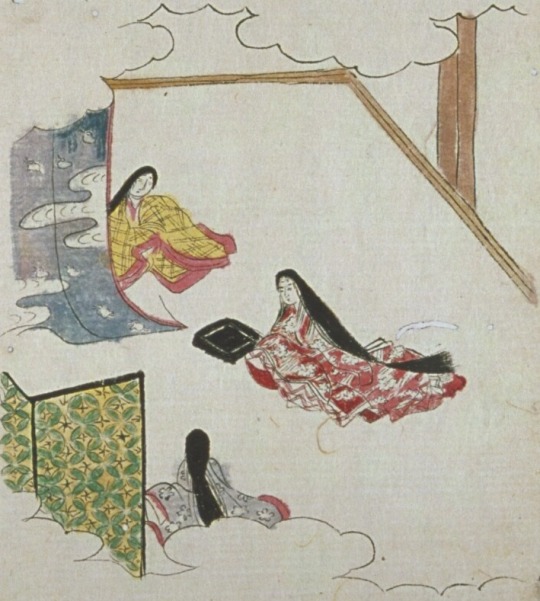
Tamamizu of course appreciates these displays of sympathy, but she cannot return, so in response she only reassures both of them that she will meet with them again as soon as possible.
Shortly after that, the mother’s condition worsened yet again. The entire family laments through the entire day, but eventually everyone manages to fall asleep - save for Tamamizu.
In the middle of the night Tamamizu notices that an old, hairless fox entered the house. She quickly realizes that he was her paternal uncle (a fox uncle, that is. Not a relative of her adoptive parents). The illness was his doing, as she quickly realizes. Tamamizu requests him to leave her adoptive mother alone. However, the old fox says he cannot do that, as the illness is his act of revenge against her family, since her father killed his child. He concluded it is only right to make his daughter sick so that she dies too.
Tamamizu admits that this makes sense in theory, but she points out that acting upon desire for revenge will only bring bad karma, and bad karma from previous lives is why both of them were born as foxes in the first place. She offers the old fox a crash course in Buddhist ethics, and warns him that accumulating even more bad karma might lead to someone eventually killing him too, and to yet more rebirths in one of the three realms which are best to avoid (animals, hungry spirits, hell).
The old fox notes following buddhas is for humans, not for those born in other realms of rebirth (he’s not entirely wrong, humans are generally held to be in the optimal condition to seek enlightenment; animals must follow instinct and thus end up accumulating bad karma, devas are to preoccupied with celestial bliss), but eventually he relents and agrees that it would be wrong to kill the woman because of the actions of her father. He concludes that it would not even make him feel better, since his child would remain dead. He tells Tamamizu that evidently he was able to meet her because of good karma acquired in a past life, asks her to pray for his deceased child, and leaves, announcing he shall become a monk reciting nenbutsu from now on.
Tamamizu did what he asked for, and even performed a funerary service for her late cousin. With the problem solved, her adoptive mother returned to good health. She was therefore free to meet with her mistress again. She was elevated to the rank of chujo no kimi, the foremost among servants.
However, despite her mistress’ best efforts to make her feel appreciated, she was suffering from persistent bouts of melancholy. She wished she could confess her love and consummate the relationship, but she concluded that since she kept her identity secret for so long, it would be no longer possible to reveal it without losing the acceptance of the girl. She decides she must disappear. However, before that she prepares a long poem explaining her predicament.

She placed it in a box, and gave it to her mistress, explaining that it should only be opened if something happens to her. She then broke down in tears.
Tamamizu’s mistress does not fully understand what is happening, and asks if she perhaps is worried about their planned relocation to the imperial court. However, Tamamizu denies that and guarantees she will accompany her on the journey there. Her mistress starts crying too, and says she has hoped they will always be together.
Shortly after, the day of the journey came. Tamamizu’s mistress and mr. Takayanagi, now recognized as a lord, were certain that she went with them, but as soon as they reached their destination it turned out she was nowhere to be found. Days upon days of grieving followed.
Eventually, the girl realized that she had no choice but to open the box. From the poem contained within, she learned everything about Tamamizu, from the day they first met all the way up to the disappearance. It explained how she hoped to protect her mistress through her current life and beyond, but had to give up after realizing it was all in vain. In the final words of the poem, she firmly refers to her with the name she was given by the girl - Tamamizu.

The poem moves her deeply, but the story does not have a happy ending - we never learn what happened to Tamamizu afterwards.
Tamamizu’s forerunners
It is agreed that much like the considerably more famous Tamamo no Mae, Tamamizu in part depends on earlier Chinese literature about foxes. Not exactly on the same sort of stories, though - she is not exactly a malevolent seductress, to put it lightly. The key to finding her forerunners is the scene in the beginning when the still nameless fox considers transforming into a male suitor at first, before settling on the form of a female attendant, and the erudition she displays through the story. An argument can be made that this is conscious engagement with a very specific type of older fox story, largely forgotten today.
In Tang China, fox stories enjoyed considerable popularity. You may remember that I mentioned this in passing a few months ago in another fox-themed article. One of the genres popular at the time was focused on fox suitors. There are many stories like that, but they largely follow a similar plot: a male fox falls in love with a human girl, takes the form of a dashing literatus and requests marriage. The girl’s family rejects the proposal, as despite charm and erudition the fox is ultimately an outsider with no family, and doesn’t depend on the well established institution of matchmaking. Afterwards, he typically tries to win the girl over with some sort of trick, and fails in the process, thus meeting his demise when his real identity is inevitably exposed.
In some cases, twists are introduced and the fox is effectively exploited by the family: for example, in the story about a certain mr. Hu (a common surname which is a homonym for the word for fox) and the granddaughter of the official Li Yuangong, the Li family agrees for the girl to be taught by the fox, and even asks him for advice on various matters, just to kill him once he outlived his usefulness.
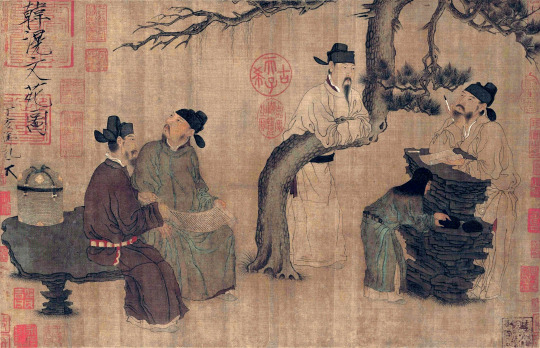
Zhou Wenju's painting A Literary Garden (文苑图, Wenyuantu), showing a group of discouring Tang literati (wikimedia commons)
Many literati came from humble backgrounds, and only attained high positions thanks to success in the imperial examinations. However, their advances were often frowned upon by nobles, who saw them as upstarts. Therefore, faking a more notable origin was widespread to secure a better position in the high strata of society. All of this is reflected in the stories of the fox suitors. Xiaofei Kang, who wrote my favorite monograph about Chinese fox beliefs, notes that the stories might have effectively been a way to cope with everyday anxieties. In other words, perhaps the fox self insert fails so that the real person sharing his precarious status can succeed.
Another aspect of the Tale of Tamamizu which offers a clue about its origins is the focus on Buddhism, and its role in the lives of non-humans in particular. Tamamizu evidently attains a considerable familiarity with Buddhist doctrine, to the point the old fox basically seems to perceive her as thinking more like a human than a fox. Evidently, she doesn’t think being an animal should prevent one from seeking good karma. This seems to reflect a medieval Buddhist phenomenon.
Roughly from the Insei period (1086-1185) up to the eighteenth century, and especially between the twelfth and fourteenth centuries, the dominant esoteric schools of Buddhism propagated the doctrine of hongaku (本覺), “original enlightenment”. This idea originates in an earlier Buddhis text, Awakening of Faith in the Mahāyāna. According to proponents of this idea all living beings, even plants, possessed an innate “Buddha nature”, as did natural features like mountains. They were innately capable of attaining enlightenment, or innately enlightened outright. Religion influences art, so it has been argued that the spread of new stories about animals behaving like people in the Muromachi period had a distinctly Buddhist dimension.
The modern reception of Tamamizu
Despite the fascinating themes of the story of Tamamizu, it only found a greater degree of modern recognition in 2019, outside of academic circles at that. I'm surprised it took so long, since when you think about it, the sensibilities of the author indeed seem surprisingly modern. The narrator even reassures us Tamamizu’s human form is the same age as the object of her affection, anticipating what sorts of shipping discourse could arise 700 years later.
Anyway, in 2019 a fragment of the story was the subject of one of the classical Japanese literature questions from the National Center Test for University Admissions, a standardized university entrance exam held across Japan each January from 1990 to 2020. This obviously exposed an enormous number of people to it, not just exam-takers.
Following this event, a Tamamizu fad seemingly swept social media and pixiv (curiously, there’s a single piece of art there which predates the phenomenon by six years; op actually updated the description in 2019 to say they are happy more people learned about the story). There’s even a Tamamizu Monogatari tag on Dynasty Scans as a result. It’s worth pointing out the wikipedia entry of the story was written in 2019 as well. Most curiously apparently a research project focused on Tamamizu, Kahoko Iguru’s Border transgression between species and gender as observed in “Tamamizu Monogatari”, received a grant in the same year too (source; more info here). It doesn’t seem the results have been published yet. I will keep you updated if that changes, obviously. I am actually surprised I didn’t notice the Tamamizu phenomenon back then, even though 2019 Antonia was distinctly more terminally online than 2023 Antonia is.
It’s worth noting that Tamamizu’s fame didn’t fade away. The online following the story gained was referenced in an Asahi Shimbun article a year later. A quick survey of social media will show you there are people still talking about Tamamizu today. People who aren’t me, that is.
What made Tamamizu so unexpectedly popular - arguably more than the story has been in the past few centuries - in recent years? Most of the linked sources relatively neutrally state that people perceive it as a “unique love story”. Social media posts are often considerably more direct: for many people, the appeal lies in the realization the Tale of Tamamizu is probably the closest to a lesbian love story in the entire corpus of medieval Japanese literature. I won’t deny this is in no small part its appeal for me too. Note this is not an universal sentiment by any means, though.
It is difficult to tell if this was the intent of the medieval author(s), of course. It is obviously impossible to deny that women attracted to women existed in medieval Japan, as is the case in every society since the dawn of history. However, they left little, if any, trace in textual sources. As pointed out by Bernard Faure, in Japan in the past as in many other historical societies “sexuality without men is properly unthinkable” and therefore received no coverage.
While there is plenty of Japanese Buddhist literature dealing with male homosexuality (trust me though, you do not want to read it; I’ve included a brief explanation why in the bibliography), there is basically nothing when it comes to women. The only possible exception is what some authors argue might be a medieval depiction of a lesbian couple in Tengu Zōshi, a work I plan to discuss in more detail next month, but note that this would be only an example of condemnation, since this work is a religious polemic dealing with vices of the clergy.

The supposed lesbian couple from Tengu Zōshi; image from Haruko Wakayabashi's The Seven Tengu Scrolls: Evil and the Rhetoric of Legitimacy in Medieval Japanese Buddhism; reproduced here for educational purposes only.
This sort of absence of evidence is a recurring pattern through history - you might recall my own attempts to find out what Bronze Age Mesopotamian sources have to say on this matter. Before the Meiji period, when the term dōseiai (同性愛) was coined as a calque of Charles Gilbert Chaddok’s freshly invented label “homosexual”, there wasn’t even a distinct Japanese term which could be applied to lesbian relationships. Once again, this does not indicate this phenomenon did not exist - but it does indicate that due to extreme levels of sexism in the perception of both sexuality and relationships it was difficult to even imagine for the average author. Faure suggests the prevailing attitude was presumably similar as in continental Buddhism, in which lesbian love “was at best perceived as a poor imitation of heterosexual relations—or a preparation for them—and as such condemned” at least in monastic rules. To put it bluntly, only penetrative sex was regarded as real.
And yet, in spite of this, I do not think it is wrong to wonder if perhaps what seems like subtext to a modern reader is actually intentional. This is obviously a reach, but given that relationships between women - not even romantic ones - were historically not a major concern of most authors, I would argue it is not impossible that a work which revolves virtually entirely around the relationships between female characters was written by a woman. Perhaps a woman romantically interested in other women, even.
Even more boldly, I’d ponder if perhaps the ambiguous gender of the fox before transformation was meant to make the romance palatable to general audiences. Note that while foxes transforming is a mainstay of both Japanese and Chinese literature, the change of gender is actually quite uncommon in such stories, making this single reference all the more unusual. Granted, gender change is hardly a major focus in the story of Tamamizu. The only real indication the fox is male is the decision to take a male human form at first, but beyond that, things get muddy to the point the matter of gender in the story evidently warranted an actual study, as I pointed out earlier. As you’ve noticed, this matter was approached in different ways by translators too.
I personally think the most important factor is the fact Tamamizu refers to herself with this name in the final poem. This name is intimately tied to the distinctly female identity she took. Whoever she was in the beginning, by the end of the story she is clearly Tamamizu. If one felt particularly bold a case perhaps even be made that Tamamizu can be read as a trans woman based on this, perhaps. I think simply disregarding the brief reference to a male form is valid too, though.
Even if these arguments were to be refuted fully, I would argue that there is a further reason why at the very least reinterpreting the story as dealing with a gay relationship is not against the spirit of the original work. As I outlined, the tale of Tamamizu seems to draw inspiration from a very specific genre of fox stories, in which foxes are essentially a metaphor for people seeking relationships which were frowned upon. Obviously, the fact that Tamamizu is not a human by default makes any relationship she would be involved in somewhat unusual and frowned upon, but that does not assign a different metaphorical meaning to her struggle.
Is Tamamizu even really fully a fox and not a human at all by the time she writes the confession of her love, though? The old fox seems to basically dispute if she still thinks like an animal. We also know that she maintained her human form for so long her biological relatives assumed she had passed away. She also found acceptance of virtually every single human character in the story - save for herself, that is. It’s also not like it’s hard to reinterpret her struggle specifically with the inability to consummate the relationship through the lens of the medieval Buddhist views of female sexuality, rather than through the lens of the general view that relationships between human and transformed foxes were doomed to failure.
To paraphrase Cynthia Eller’s evergreen quote about futile search for nonexistent matriarchal prehistory in ancient texts, I do not think an invented wlw past can give anyone a future, but at the same time I do not think it means we should conclude that nobody ever had similar experiences in the past, or that we can relate with works even in ways their authors did not intend. For this reason, I would ultimately argue in favor of embracing the Tale of Tamamizu as a narrative which can be read as a lesbian love story.
Bibliography
Bernard Faure, The Red Thread. Buddhist Approaches to Sexuality (please note: read this book very cautiously since multiple content warnings apply. Faure is a remarkably progressive author, so it’s not about his personal attitude or anything. The problem is that it is not possible to deny much of the Japanese Buddhist discourse about homosexuality had little to do with modern notion of gay relationships, and essentially amounts to explaining when exploitation of children is a pious act)
Rania Huntington, Alien Kind. Foxes and Late Imperial Chinese Narrative (some sort of explicit content warning applies here too, though mostly because some of the discussed works are trashy Qing period erotica. More funny than anything.)
Xiaofei Kang, The Cult of the Fox: Power, Gender, and Popular Religion in Late Imperial and Modern China
Keller Kimbrough and Haruo Shirane (eds.), Monsters, Animals, and Other Worlds. A Collection of Short Medieval Japanese Tales
Jacqueline Stone, Medieval Tendai hongaku thought and the new Kamakura Buddhism: A reconsideration
199 notes
·
View notes
Text
The Crane Wives Analyzed: Coyote Stories
(Yes I’m changing the verb every time I think it’s funny)
The mellower of the albums, this focuses on the self. Songs of introspection and reflection. From the firmly anti-capitalism “Hand That Feeds” to the melancholic “Never Love an Anchor”. It isn’t to say there aren’t any moments of intensity. In fact, the vocalists have moments of growls deep and hungry as the eponymous coyotes themselves.
Keep You Safe
It is human instinct to shield oneself from danger, from the fear of the unknown. The pitfalls of anxiety make any risk feel insurmountable and an eternity is spent looking from the outside in. The singer’s feelings took root in childhood, nerves keeping them from climbing trees in fear of a fall, of hurting themself. Believing that they weren’t strong enough, brave enough, weren’t enough to even attempt to try. Watching their friends from a distance as they made it to the heights that inspired such fear.
And then the thesis: Nothing in life comes easy, spoken from a father to a child. Being afraid of the world, of the future, it’s a security blanket. An easy escape that fails to fix any real problems, it won’t truly keep you safe. Waiting and hoping to just suddenly become brave, or strong enough, it won’t happen.
As the singer ages the fears shift, collecting over the years. Not limited to only heights and falling, but grander more existential threats. Fears collected from those around them, accumulated from the news, from loved ones, from friends, trapping the singer in a new web they fear they can’t escape from. They carry them, all of their untold regrets, all of the plans abandoned by the wayside, and remember what their father told them.
Knowing that mistakes will occur no matter what is one thing, acting is another. That first step can appear insurmountable, an eternal obstacle to one’s dreams and ambitions. Because what if? What if this step is a mistake? What if this leads to ruin? What if- What if. How can one say “come what may” when all their life they’ve let that fear paralyze them?
It’s no easy feat, it’s hard, and sometimes, you will fail. But some of the most beautiful parts of life come from those risks, and it’s worth it in the end to climb that tree, pursue that dream, try to be better, braver, because time will pass anyways. You’re no safer in the dark than in the light, so why not?
The Moon Will Sing
Often the Sun and Moon are tied together in symbolism as a pair of mutual lovers or siblings, each with their own beauty. But the truth is that the Moon is simply a ball of rock, reflecting the light of the Sun back to Earth. It doesn’t shine on its own. Forever caught in Earth’s orbit circling around the larger star. Waxing and waning, glowing a faint cold imitation in the night sky.
So too does the singer reflect their partner, a hollowed out shell that only feels worth when they’re with their lover. Being who they’re told to be, in spite of knowing that they at one time possessed the power to be anyone yet they let their partner, their sun, make that choice for them, guide them through the dark. Never once questioning their decisions. The slow guitar a quiet melancholy companion in their lament.
Their heart is empty, bare of any love, endless empty rooms of what could’ve been reminding the singer constantly and yet the weight of a decade’s worth of blind trust and manipulation leave them apathetic. Lying in the dusty bed with their lover wondering what it was truly worth. There’s the implication that they’ve both made their peace with the exhaustion, but it’s impossible to know how their Sun feels. Only the mutual acceptance that this is all that there is.
The chorus entreats to the Moon to sing a song for them, to share in their plight. The only being to understand their pain and tell their story. They know that they love their partner like the sun, bearing the brunt of their darkness and claiming that they had no light of their own. Yet who told them that? Their partner? Others in their life? Regardless of where the belief came from, they shine only –in their eyes– with the light given to them. With the person they’d become.
Perhaps emboldened by the realization that this relationship, who they’d become is not who they want to be, they confront their partner. Lamenting all of who they once were that they’d lost to their lover. Hoarded, implying a theft that’s left them without. All of the words bitten back over the years leaving wounds inside, they want to be themselves again. Have the fire and bite that they’ve so long been denied.
It’s a story without a resolution, a dance with no ending. A moon trapped in the orbit of a sun.
Allies or Enemies
It happens on occasion, a word slips out without meaning to. Maybe it’s been a long day, or week, a hard time in general. Maybe patience that typically let issues slide before ran out, and you let out a statement in closed quarters that felt good to say, yet it wasn’t genuine. Authentic. Yet someone overheard, and now it’s a problem. It started a fight, and you’re left with the question of what happens next?
The singer’s words are destructive, in their own admission, wildfires and weeds that spread far beyond where they started them. Plaguelike in their transmission. Perhaps it was frustration that tinged their vision red and let loose pointed insults, weaknesses they knew the other had but promised to never target. A threat they didn’t mean. They swear that they didn’t mean it, voice dropping lower before swelling again as they ask their partner to listen to them. That moment of weakness wasn’t meant to be heard, using the turn of phrase “you owe me ears for dropping eaves” to call their partner out for listening in. Asking for the moment to be forgotten before asking the titular question: are we allies or enemies?
The third verse reminisces on better times when an off comment or heated moment could be dispelled with a joke. Anger fizzling into nothing. Now it’s different, now the anger lingers and the air grows cold. They’re fighting now and it hurts, neither happy about the situation and the singer pleading for the “war” to stop.
Because the options are now to either give their relationship another try or to bow out, walk away from one another. And in spite of the troubles they’ve had, the singer wants to try again. They want to put the war to bed and love again, to be let in and try to remedy what’s been done. Still the uncertainty remains, are they in fact allies or enemies?
Unraveling
Love and loss run as constant themes throughout The Crane Wives’ discography, the latter serving as the origin of so much hurt. Formerly happy memories sour, the relationship that once brought out the best in you now falls apart. That support system shattering, especially if the relationship meant more to one party than the other.
In the midst of the journey, one can forget that there was ever a problem, as the singer recalls. Their first love a tailor, who took to them as though they were a project. Eagerly attending to their needs, “stitches neat and clean”. And now that love is gone, the work unfinished, and the singer is unraveling.
Each love following carries a different title, a gardener, a carpenter, each using their skill sets to fix in the only ways they know how. The gardener plucks away weeds and trims the excess, the carpenter carves a smile and sands down the edges, and each one leaves in the end. Each change that they made a source of suffering now that they’re gone. With the “weeds” plucked away and without a hand to tend, the singer is withering. The carpenter sanded the edges but those held them together and now cracks are widening.
The singer laments that they didn’t understand how much they needed those they were with, and while this may be a “taken for granted” statement, in the broader context of the song it’s a realization of how intertwined they became in their relationships.
Their last love married them, “tied me up in knots” or in plain terms, tied the knot. The line before that “kissed me once before he left” implies perhaps a draft or war, a brief love where the pair married before they were likely ready. He left, promising to come back home and then never returning.
A personal interpretation is that all of the lovers: the tailor, the gardener, the carpenter, the man, are all the same person. The singer lamenting the different aspects of him now that he’s gone. The “you” in “I never knew I needed you” could very well be singular or plural, but I feel that’s up for interpretation.
Hard Sell
Fun part of growing up, as I and others have discovered, is the fact that no one has it all together. Everyone’s just making things up as they go along to the best of their ability. Which kind of sucks honestly when you first hit that revelation. Because all your life you’ve operated under the assumption that adults know what’s going on. That people in charge have a plan. But no, actually.
And that makes life tricky at best. Much to the singer’s chagrin. Each day they get up and do their best to make something out of their lives, pushing aggressively on good days to buy into the “hard sell” of the way life is supposed to go. A hard sell, in marketing terminology, is an overly forceful sales tactic. High pressure and meant to close a deal. When things are going well, the singer can swallow the bitter pill. Most of the time there’s nothing they can get a grip on, it either tears into them or falls apart at the slightest touch. Moth wings and barbed wire.
It’s tearing them apart too, their voice stopping and starting in sentences as though on the verge of the breakdown that they’re warning they’re on the brink of. They want a respite, someone to come in, wipe their tears away and say it’s alright. Comfort is in short supply in a world obsessed with profits and success. Where not having it all together is a badge of shame.
They ask if it’s really just them who can’t get their life in perfect order? Is everyone pretending to have it all wrapped up in a nice little bow? They’re holding on with a loose thread of their own but they keep pulling at it. Trying to get closer to perfection or tear it all apart.
The compulsion to pick and tear at any flaw or imperfection comes with the desire to eliminate them. Because if you can pull away the holes, maybe there’s something worthwhile underneath. “A better me”. There isn’t, not one that can be revealed like this.
They plead for everyone to stop pretending for a moment, so maybe they could all be honest with themselves. Maybe then they could all actually figure things out. Be a little kinder. Or maybe not, and it’s all a mess regardless.
Rock Slide
A quick, breezy song, running fast and sudden as the titular event. A distinctly Folk™ aesthetic, the kind of song passed down and sang with a small town dance. It swings and swirls and then lets you go.
The singer feels the oncoming disaster coming from the mountain top, warning their lover that they’d better skip town and run before the rock slide buries them alive. They’d only just arrived, just planted roots but the singer insists they have to go lest “the devil come to claim them”.
It seems the pair have tumbled their way from town to town, and there’s something on the horizon that gives the singer reason to fear that their time is up and they have to go. Sprinting away without looking back.
Why are they running? What are they running from? The law? Are they con-artists? Is their relationship forbidden, and they have to go before they’re found out and killed? The line “that monster’s coming and it don’t care for you or me” seems to point towards the latter, with a pursuing force that will never stop. Sees them as less than human.
A brief song, one of a few on this album, but a fun one.
Metaphor
Ah the metaphor, that favorite of literary devices. A comparison that can dress up any subject, turning the mundane into the extraordinary. Blood red sunsets, the infinite diamond tapestry of the night sky, they accentuate, and in some cases, obfuscate. Like the lyrics in many of the songs in the Crane Wives’ repertoire, the singer relies on metaphor to obscure the meaning of their words. Dressing their language in borrowed phrases and secondhand expressions picked up from others to keep themselves apart, separate. Their intentions untrustworthy at face value.
Because sometimes it’s easier to keep cards close to the chest and become a character rather than let someone in. If one wraps themselves in enigma, then they don’t have to worry how others see them, they control their perception. It’s safe, it’s clean.
They keep no secrets, no skeletons in their closet, because instead they dig graves. They cut contact, they leave. Or perhaps they’re the one who’s been left before. Once bitten and twice shy, no longer willing to expose the truth of themselves for fear that it will be turned against them. They beg for you not to look too deeply into the words they say, to look at them for too long, lest you see the scars.
And again they acknowledge that they’ve honed their skills, stretching the truth into sweet meaningless fluff. Cotton candy, without substance and liable to fade away at the slightest touch. Untrustworthy, as they’ve made themselves to be.
The Hand That Feeds
The anti-capitalist anthem we need in these trying times. All the more relevant with the rising surge of unions in the United States in the wake of years of abuse from those in power. A personal recommendation, if you can listen to a live recording of this song, please do. It will make you want to yell and scream the song in tandem as a fair warning, but it’s so worth it.
It’s a tale as old as time, the dream of working hard, earning a living, and making it for yourself in America. Yet, that dream serves as nothing more than fantasy, an empty promise obscuring the harsh reality. There’s no escape from the rat-race, no reward for a job well done. Any and all hope dashed against the grindstone. Those who come home from their jobs howl their laments to the sky, forced to work themselves to the bone in order to even scrape out a living. Chained to their jobs, nothing more than mere animals to the greater system.
The chorus echoes sentiments of early work folk songs, coins clinking together in otherwise empty pockets. No real money but the bare minimum that makes noise in its lacking. It gives the song an aged quality, as though it came from the Great Depression where coins were often all a family had to feed themselves. Now pocket change can’t even buy a meal anywhere. They can’t stop the time either as it passes, generations stuck in the same cycles of poverty wages under the same circumstances and masters.
The singer’s family endured this injustice, their father having traded his youth, his heath, his dreams for the Great American Ruse. Selling pieces of himself for cheap to put food on the table. But he warns his child to take their own path. He wanted to give them a better life than the one he’s made. Don’t follow his example or they’d have squandered those years of work.
He taught them how to stand up for themselves, to not merely take what they’ve been handed and be grateful for the scraps. They deserve better, they are better. And the hand that feeds earns no loyalty, especially when it turns cruel and strikes those it deems lesser than. If you are a dog to them, remind them that a dog has teeth.
And so the child raises their voice, proclaiming that their freedom is worth more than a paycheck. That the empty promise of becoming rich means servitude to the rich. They’ll never have them.
Remember: you’re not a temporarily embarrassed millionaire. You have more in common with the man you see on the side of the road than you do any ceo. Any set of unfortunate circumstances could land you destitute. There’s power in numbers if the recent wave of strikes has shown anything. They rely on the man to make their numbers go up.
Remind the hand that feeds that it still has fingers because we let it.
Little Soldiers
Love, war, two subjects that go hand in hand. The ever dragging drudgery of attempting to salvage a relationship when it’s devolved into nothing but fighting. It’s a familiar subject for the Crane Wives, and herein is the aftermath. The words they’d used to hurt one another the soldiers in the war, each side dug in and yet holding hands across enemy lines. (Perhaps the war in “Allies or Enemies” finally coming to a close). Pretending that everything was fine.
The singer swears that they loved their partner once. The line repeated at a near yell, as if daring them to challenge this fact. It’s frantic, desperate. And yet all too exhausted at the end of the war.
Each side resorted to dirty tricks and low moments in their fighting. Their partner would offer their secrets to others and let the “dogs” hurt them, hounds of the war. And the singer would bring their grievances to every room in their home, never giving a moments peace and yet their lover would hold them at night anyways.
Now they’re left without their lover and they swear they were loved once. That it meant something once.
At the bridge they concede that the whole thing is a loss, but not out of surrender. They’d each tried to make it work, afraid to give up for varying reasons. They’d done their best. It wasn’t enough.
And it’s over, the silence ringing with the remnants of war songs. Boxes packed as their lover moves away and leaves at the end of it all. The singer fought tooth and nail until the end and yet… it was futile. Their lover already left. Perhaps the war was more one sided than they initially thought.
The imagery of war, the trenches, coming home in boxes, it brings to mind thoughts of futility. Wars that never end with no “winner”. No resolution. They affirm, quiet now, that they swear that they loved their partner once. Then louder as they face the aftermath of the war. Left to pick up the pieces.
Sleeping Giants
A song of awakening, starting off with the same rocking guitar from “Rock Slide”, both involving mountains. There’s a force rolling down the mountains, power rising in the land and rushing into their veins. Every aspect of nature from the moon to the trees are changing, there’s an uprising. An energy. Something is calling now, and it wants the singer to follow.
Another one with not a lot going on lyrically, but it’s a rocking good time to listen to.
Of Everlong
A short and sweet melody, a melancholy lament of only vocals. A soft lullaby reminiscent of older bluegrass. A song of distance and a journey. Mourning for a lover to let them go after they’ve died, because in the end they belong to them.
It’s a departure from their other songs, barely coming in at over a minute long, but it highlights how magical their harmonies are.
Not much to say here, but a pleasure to listen to.
Never Love an Anchor
Oh where to begin with this song. How does one describe a wound? A hole where a heart goes? Knowing that they hurt when they were meant to heal. A role they were never meant to fill and failed to live up to.
“On some level I think I always understood that these hands of mine were clumsy, not clever”. Off the bat the song hits with the self awareness that there is so much they could do but knowing that the attempt would break things, that they are clumsy. No skill to be found. And yet their heart it is “guilty not remorseful”. They keep this fact locked away but they know. They know that they’re failing, but don’t feel remorse. They fear their true feelings would be overbearing and thus keep them away, opting for neglect instead.
The singer is an anchor, keeping their loved one weighed down in their mind. So they cut them loose. Set them sailing away. Letting the distance grow until they couldn’t hurt the other anymore. A necessary separation that leaves the singer forever wondering. Stuck in what-if scenarios, unsure of whether to breach the gap between them or to leave it be. How are they doing now? Better? Worse? Do they resent the lack of effort or understand? Do they deserve that understanding at all?
The paradox of being “someone I have loved but never known”. How do you unpack that? It evokes so many images of moments where love could be shown but was said. Small actions never done to prove that love. The barest bones of a relationship there, yet never explored, never encouraged. Even the singer acknowledges this, wondering if they’re ever thought of, wondering if there’s questions as to why they did what they did. Never tending to a fever, never holding gently.
Others have spoken on the selfish nature of the singer, calling them cruel and callous. And they acknowledge this. And yet they wonder what the other thinks of them. Wonders if their failings outweigh the harm they might have caused if they had tried.
Then there is the final line. “And wonder why they never had the chance to lose you.” What else is there to say? That the singer gave up before ever fully trying. That they resigned themselves to not getting attached so they wouldn’t have to bear the heartache themselves. They are selfish, and they leave whoever the song is addressed to with that knowledge.
It is the failings of a parent, someone meant to love, the failing of a partner who doesn’t know and doesn’t want to risk themselves. It leaves the listener hollow, with the knowledge they did nothing wrong, but that they had no way of fixing something they likely threw themselves at in vain.
The instruments in the back only heighten the emptiness, with a soft melancholic guitar and light drums as the only accompaniment. There is no anger in this sadness, no entreating. Only the sound in the space.
New Discovery
A wistful wandering, that feeling that comes when the sun peeks through the clouds and breaks the fog. Expanding horizons broader than ever thought possible. If “Safe Ship, Harbored” lamented a shrinking horizon, then this declares a new journey. A yearning for more than what they have because they deserve more than simply staring at the water forever. They want to find something new, untouched, see beauty the world’s never known. What good is the world if everything’s already been seen? What’s the point of staying only within the known?
It’s easy to get lost in the repetition of life though, when the days roll by like an endless desert. Rolling dunes identical to the naked eye. Yet, one can continue through, seeing the path behind them, a reminder that they’ve come a long way and there’s further to go. Pick a direction, and go. Keep going, and don’t waste the work you’ve done up to that point.
The singer cries their hopes to the heavens, that they want something to be left for them, something new to discover, something more to life. Something waiting for them if they only try.
And of love, the singer wants a love that’s ever changing. That as the years go on, as age alters their bodies and weathers their souls, they want to find something new to love. To never fully know their lover and find a new way to love them all over again. There can always be more, if they’re willing to discover it.
#the crane wives#my writing#melody rambles#lord this took a while sorry folks#it's been a Time#hopefully I finish Foxlore and the singles before the next album comes out lmao#at least there were a few short ones in here that didn't take much#to no one's shock the first of these I completed was never love an anchor
65 notes
·
View notes
Text
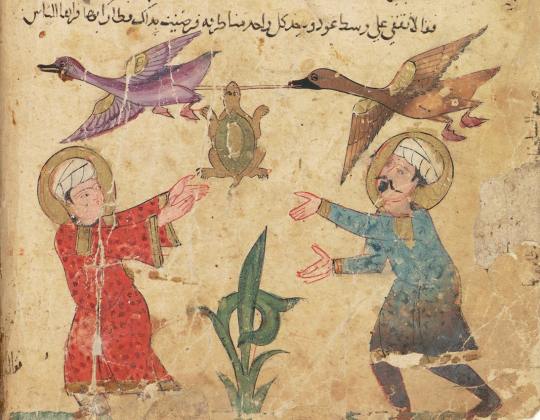
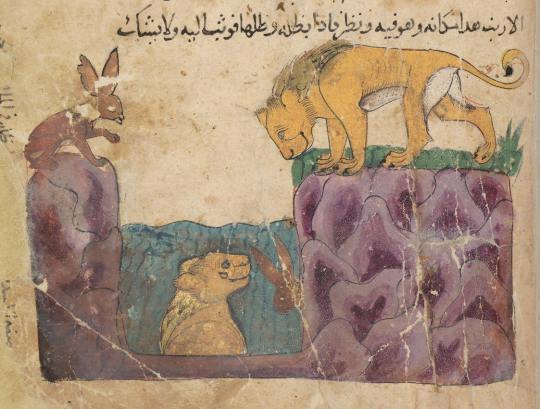
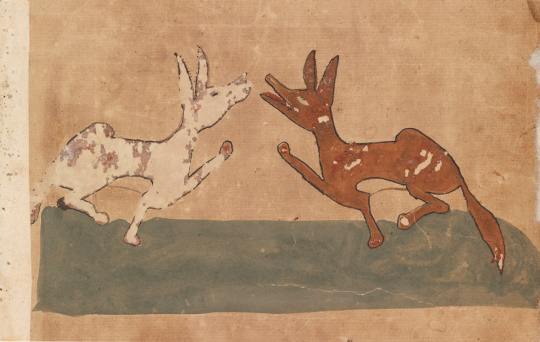

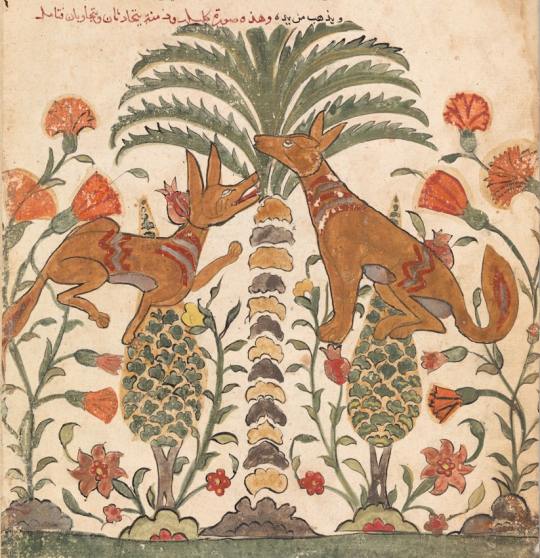

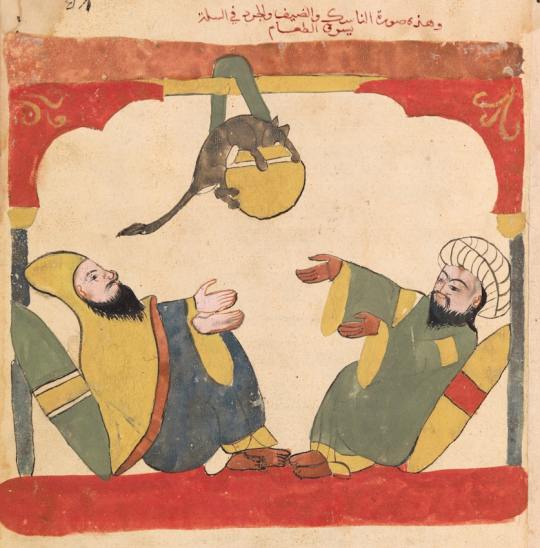
Travelling Tales
Kalīlah wa-Dimnah and the Animal Fable
By Marina Warner
Influencing numerous later animal tales told around the world, the 8th-century Arabic fables of Ibn al-Muqaffaʿ’s Kalīlah wa-Dimnah also inspired a rich visual tradition of illustration: jackals on trial, airborne turtles, and unlikely alliances between species. Marina Warner follows these stories as they wander and change across time and place, celebrating their sharp political observation and stimulating mix of humour, earnesty, and melancholy.
Kalīlah and Dimnah are two jackals, wily and ambitious, one virtuous and the other rather less so, who give their names to the eponymous cycle of animal fables in Arabic that is framed by the stories of their friendship, adventures, and mishaps.1 The collection bears a family likeness to Aesop’s Fables and to other classics of moral exempla, but the volumes vary one from one another and even when the stories coincide, they aren’t identical. They share certain generic features: animal protagonists above all (lions, wolves, monkeys, asses, mice, magpies); a narrative of braided tales passing between speakers, often imbricating one story inside the other; and a prevailing tone of tragi-comic moralising coupled with world-weary wisdom about the folly and the treachery of humans.
Most of all, the story of the two jackals Kalīlah and Dimnah, and the tales told in the course of their adventures, are travelling tales, which have been travelling for a long while, migrating from language to language, culture to culture, religion to religion. The Arabic stories’ rich history ranges from Benares to Baghdad and Basra and Rome and beyond, appearing in numerous iterations over centuries, moving across borders, carrying the sparkling hope and mordant cynicism, the canniness and the wit of a form of wisdom literature that originated in the Sanskrit Panchatantra (The Five Books, or Five Discourses) and the Mahabharata, sometime in the second century BCE. Two significant branches grew from this trunk: first, a collection often attributed to a legendary Indian sage, known as Bidpay or Pilpay, and second, the Arabic branch, beginning in the eighth century with the work of the scholar Ibn al-Muqaffa‘ (d. 139/757), who translated and compiled Kalīlah wa-Dimnah. Ibn al-Muqaffa‘ worked from a lost Pehlevi (Middle Persian) composition by a writer called Barzahwayh, which he treated freely, mixing into the Panchatantra’s original fables four more tales, and a highly circumstantial and persuasive explanation of how the manuscript was obtained; he also added a crucial dramatic chapter about Dimnah’s trial, self-defence, and ultimate punishment.
Read the whole essay https://publicdomainreview.org/essay/travelling-tales/
22 notes
·
View notes
Text
Why I don't think Copia is dying and why he's not the antichrist:

It's well known that TF likes to follow certain themes for his albums concepts.
We had "Prequelle" about the black plague and now we are experiencing "Impera".
Impera is about fallen empires, our cyclic history of conquer and rule. I think ghost is staying with this concept till the next album and this why i don't think he's bringing the antichrist concept so soon.
Ghost is telling us a history and we need the apocalypse in order to have the antichrist and imperia isn't about the apocalypse.
Meliora, Prequelle and Impera are the first steps to create the apocalypse, after all the chaos, we are having the apocalypse and the Antichrist.
That being said, i really think Tobias is going to release an album about the Apocalypse and the end of the world.
"Oh but we already have Infestissumam and Opus Eponymous"
Opus Eponymous is more of an collection of prayers and a few stories about satan and satanic figures.
Infestissumam is more focused on the antichrist, but it's providing us prophecys and prayers for idolatry.
Meliora is about the world without a god, the early stages before the apocalypse.
What the nameless ghoul said about it:

Some Christians Scholars said the antichrist is the first of the four horsemen of the apocalypse, he's going to be the world leader after the rapture and the chaos.
He's going to bring the apocalypse, he's charming and confident.
I don't think this description fits Copia.

Resume:
Meliora, Prequelle and Impera where all the early stages before the apocalypse.
I don't think Ghost is bringing the antichrist so soon because we need one album solemnly about the Apocalypse, to actually have a story for the antichrist and this guy is not Copia
"what about the vitral where Copia is naked and have a enigmatic chest tattoo?"
In my opinion, that picture is actually a representation about Adam and Eve, but it's not literal. Copia is the one holding the apple instead of the woman, this is a metaphor that says he's the one making us sin, he's the one offering the apple of sin.


About Copia's death:
i don't think he's dying, he will probably be deposed and after that, we have papa V. Tobias is not a big fan of being predicable, so honestly, he's not killing papa iv so soon.
I have a theory about Copia too:
Bonus:
Even tho Mary Goore is not an part of the Ghost lore, they're actually a good candidate to being the antichrist.
In the song "under the spell", Mary is actually singing like they're the antichrist itself:
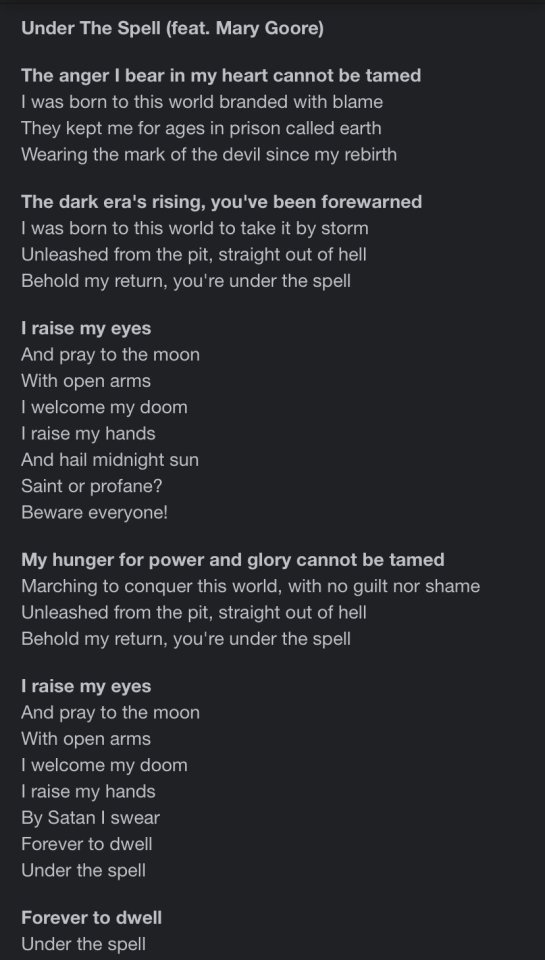
When TF said this:
We need to remember that angels are creatures without genders, so maybe, Mary is actually an fallen angel and a good candidate of being the antichrist.
Another thing: since the antichrist is the exactly opposite of jesus, his mother needs to be a "morally wrong woman". So maybe, the antichrist is the son of one of the papas with an sister of sin.
Overall, this is what i wanted to share! I hope it makes sense.
#ghost#ghost band#copia#ghost copia#ghost terzo#papa emeritus iv#cardinal copia#ghost lore#ghost theory#mary goore#i cant wait omggg
178 notes
·
View notes
Note
Following on the castle question, do more nobles in ASOIAF have castles compared to real life history
It's more the case that most of the nobles we meet in ASOIAF are from the higher end of the nobility - the Lords Paramount and Principal Houses of the Seven Kingdoms - who are more likely to own castles.
By contrast, in the Dunk & Egg stories, we see more of the lower end of the nobility. Given our protagonists' point of view, in these stories we encounter hedge knights and sworn swords and landed knights like Ser Eustace Osgrey, whose Standfast is described as a fortified towerhouse:

This is exactly what a major type of fortified manor house looks like - because the artist probably referenced a photo of a surviving fortified manor house from our world. And in Sworn Sword, we see major intraclass inequality between marginal landed knights like Ser Eustace and the more well-established and well-capitalized small lords like the Webbers of Coldmoat - who can afford to maintain a small castle (with its eponymous moat), which happens to include having enough soldiers to back up its monopoly over the Chequey Water against rival claims.
While George R.R Martin's chops as a medievalist are often called into question, I think his knowledge base is a lot stronger when it comes to topics that older historiography focused on (wars, arms and armor, castles, dynastic politics) and a lot weaker on social history topics that have become more prominent in recent decades (the material life of the masses, medieval race, gender, and sexuality, etc). I would be very much surprised if GRRM hadn't collected the same illustrated books of Arms and Armor, the Medieval Castle, and so forth that I had when I was a young nerd.
#asoiaf#asoiaf meta#dunk and egg#castles#medieval castles#fortified manor houses#grrm#medievalism#medieval fantasy#medieval history
59 notes
·
View notes
Text

Stephen King will publish You Like It Darker on May 21, 2024 via Scribner. The 512-page short story collection will be available in hardcover, e-book, and audio book.
It features 12 short stories, several of which have never been published - including "Rattlenakes," which serves as a sequel to 1981's Cujo. A full list can be found below, along with the synopsis.

Stories:
"Two Talented Bastids"
"The Fifth Step"
"Willie the Weirdo"
"Danny Coughlin's Bad Dream"
"Finn"
"On Slide Inn Road"
"Red Screen"
"The Turbulence Expert"
"Laurie"
"Rattlesnakes"
"The Dreamers"
"The Answer Man"
“You like it darker? Fine, so do I,” writes Stephen King in the afterword to this magnificent new collection of twelve stories that delve into the darker part of life—both metaphorical and literal. King has, for half a century, been a master of the form, and these stories, about fate, mortality, luck, and the folds in reality where anything can happen, are as rich and riveting as his novels, both weighty in theme and a huge pleasure to read. King writes to feel “the exhilaration of leaving ordinary day-to-day life behind,” and in You Like It Darker, readers will feel that exhilaration too, again and again.
“Two Talented Bastids” explores the long-hidden secret of how the eponymous gentlemen got their skills. In “Danny Coughlin’s Bad Dream,” a brief and unprecedented psychic flash upends dozens of lives, Danny’s most catastrophically. In “Rattlesnakes,” a sequel to Cujo, a grieving widower travels to Florida for respite and instead receives an unexpected inheritance—with major strings attached. In “The Dreamers,” a taciturn Vietnam vet answers a job ad and learns that there are some corners of the universe best left unexplored. “The Answer Man” asks if prescience is good luck or bad and reminds us that a life marked by unbearable tragedy can still be meaningful.
King’s ability to surprise, amaze, and bring us both terror and solace remains unsurpassed. Each of these stories holds its own thrills, joys, and mysteries; each feels iconic. You like it darker? You got it.
Pre-order You Like It Darker by Stephen King.
37 notes
·
View notes
Text
jokes aside i'm kind of surprised nobody has brought up how the season 2 poster of succession pretty much completely lays out who will 'win' succession and become the next CEO, as long as you have an eye for art and opera.
(spoilers incoming, obviously.)
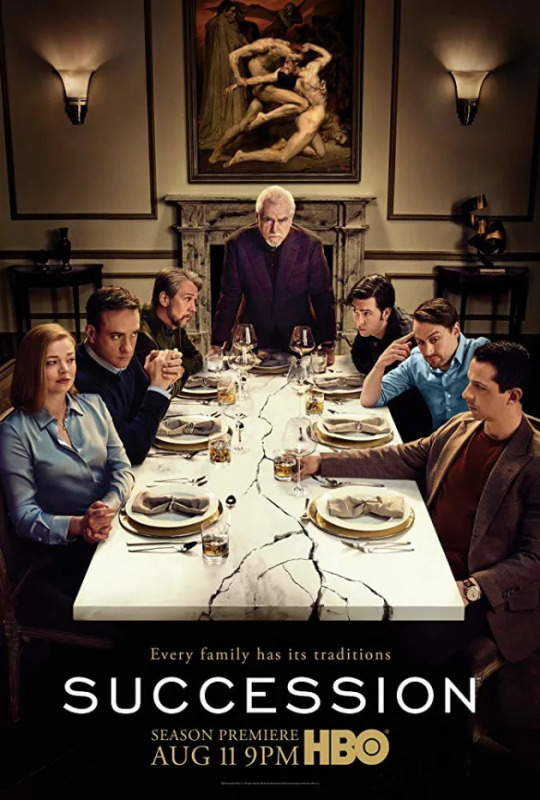
that painting there in the back is like, weirdly prominent. so what the hell is it of?
well, hell, actually. specifically these guys.

this is dante and virgil, a painting by william-adolphe bouguerea. it depicts a scene from the divine comedy in which dante and virgil witness a fight between capocchio, a heretic, and gianni schicchi, who was sent to hell for using fraud to claim another man's will.
which on its own is something. but there's even more going on here. you see, in 1918 giacomo puccini was looking for a subject to write a one-act comedy opera about, and he settled on telling gianni schicchi's story in an eponymous opera. gianni schicchi the opera starts with a wealthy patriarch dying, and his morally bankrupt family coming in to collect their inheritance- only to find that the patriarch hadn't actually willed them anything. they settle on summoning gianni schicchi- local trickster and the father of a family in-law- to help. through some looney tunes-esque slapstick shenanigans, gianni schicchi gets control over the will- and then uses it to will himself and his daughter everything and lock out the original family from what they thought was theirs. the in-laws win, and the original family is chased out of the house they thought was theirs and into the streets.
they had to have put that painting in there for a reason. and they would have had to have known about the opera the painting is tied to. and there's only one in-law in the show who could have reasonably snagged the position the roy siblings were all vying for.
tom was always going to win.
79 notes
·
View notes
Text
⚠️Vote for whomever YOU DO NOT KNOW⚠️‼️
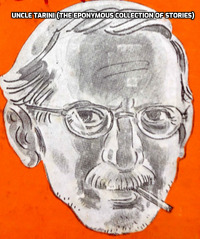

Click on images for labels
Vote under the cut if you read the rules
#ultimate obscure blorbo#polls#round 8#Uncle Tarini (The Eponymous Collection of Stories)#Uncle Tarini#The Eponymous Collection of Stories#Varvara Lukinishna (The Slynx)#Varvara Lukinishna#The Slynx
19 notes
·
View notes
Text

Headline: Iconic Street Artist Unmasked: Dame Julie Andrews Revealed as the Mastermind Behind Banksy's Artistry
FOR IMMEDIATE RELEASE
LONDON, April 1, 2024 (PJV NEWSWIRE) -- In an astonishing turn of events that has rocked the art world to its core, Dame Julie Andrews, the celebrated singer, actress and star of family classics like Mary Poppins and The Sound of Music, has been unveiled as the creative mastermind behind the enigmatic street artist, Banksy.
The shock revelation was announced by a team of international researchers at the Tate Modern in London. Head researcher and world-renowned Banksy expert, Professor Savant of Whangdoodle University, explained that the team initially set out to map the geographical patterns of Banksy's work, but noticed an intriguing overlap with the locations of Dame Julie's UK appearances over the years.
Further investigation uncovered a series of coded messages hidden within Banksy's artworks that, when deciphered, spelled out various Andrews references. The celebrated Bansky stencil "Girl with Balloon" revealed a sequence of tiny numbers in the balloon string that corresponded to ASCII values spelling "How do you hold a moonbeam in your hand?". "Kissing Coppers" contained an anagrammatic mix of letters on the policemen's epaulettes that unscrambled to read, "The constable's responstable..."
The smoking gun came when researchers discovered a hidden subterranean studio deep beneath the Theatre Royal Drury Lane, containing stencils, spray cans, and a collection of Andrews' vinyl records. Here the team located an early draft version of Banksy's "Flower Thrower" where the famous bouquet was a posy of edelweiss.
The revelation that Dame Julie is the hand behind the elusive graffiti superstar has stunned the entertainment and art worlds alike with critics scrambling to reevaluate the combined Andrews-Banksy oeuvre. Professor Savant discerns a deep, thematic link between Banksy's provocative street murals and Andrews' film characters, both of which challenge societal norms with a mix of whimsy and sharp commentary.
And the Banksy pseudonym? Savant believes it is a nod to the name of the family transformed by Andrews as the eponymous flying nanny in Mary Poppins. Just as Poppins upended the repressive Edwardian world of Mr Banks with her magical carpet bag of tricks, Andrews as Banksy has been sprinkling another brand of subversive mischief across the urban landscapes of the modern world.
Dame Julie Andrews has yet to make an official statement, but a source close to the star says, "Julie has always had a flair for the dramatic and she constantly seeks new outlets for her creative voice, so it's not all that surprising that she would take it to the streets!"
THIS IS A BREAKING NEWS STORY. FURTHER DETAILS TO FOLLOW.
10 notes
·
View notes
Photo
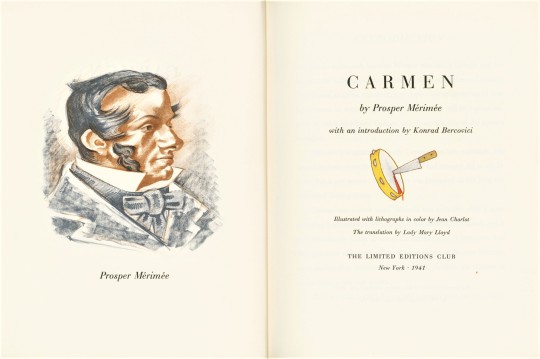
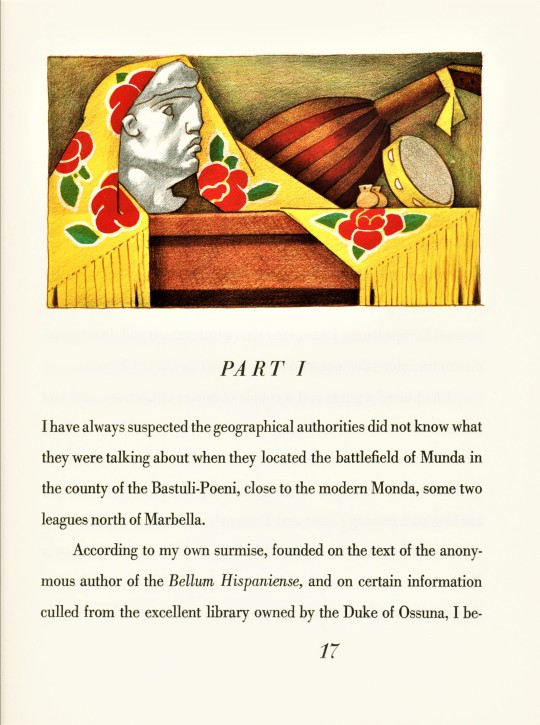

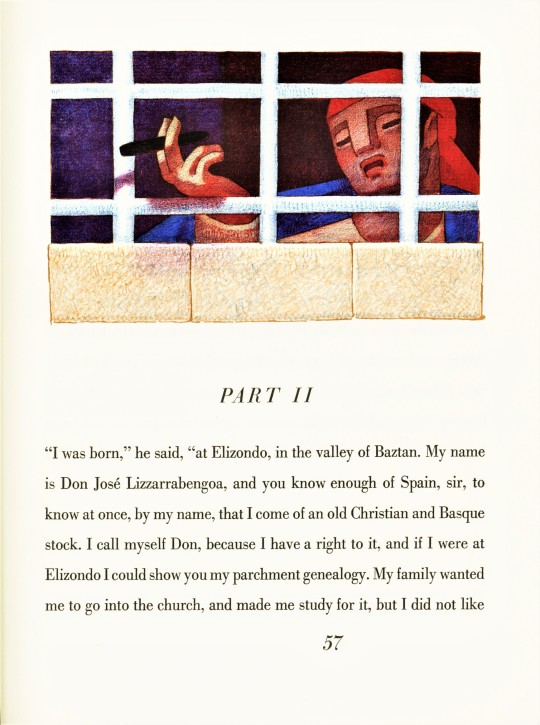



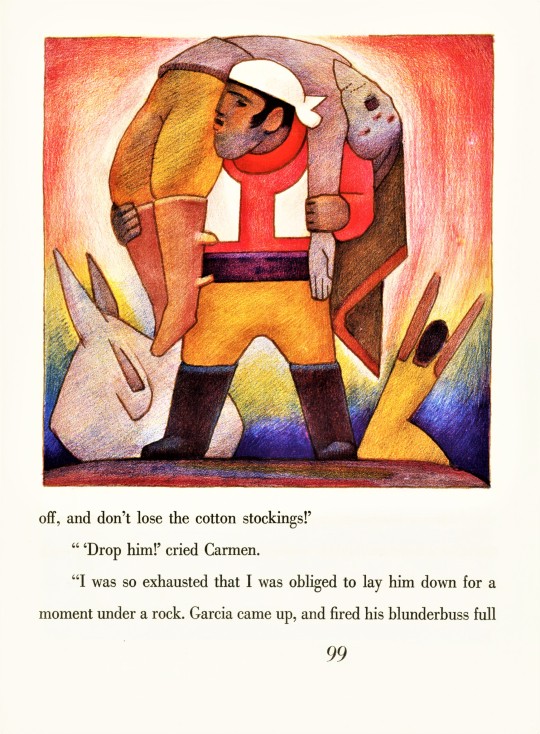
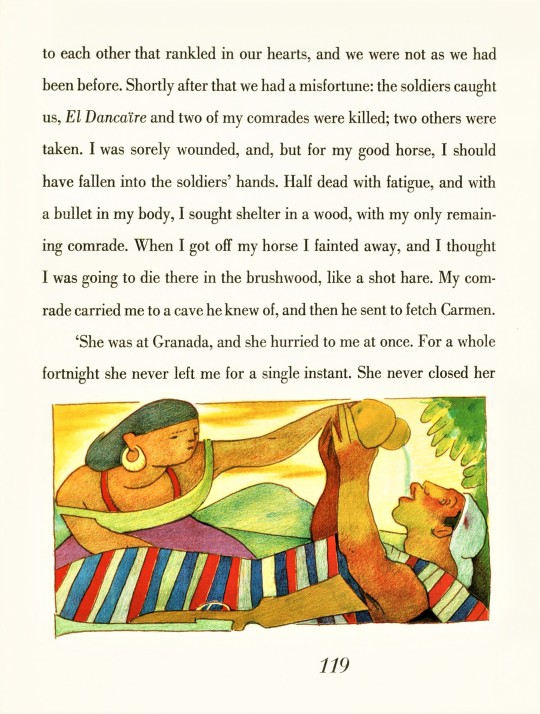
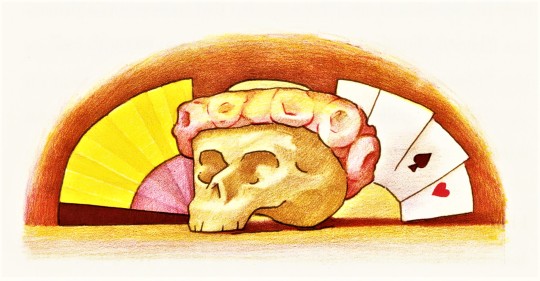
Fine Press Friday!
Our Limited Editions Club Shakespeare series keeps giving us more artists to look for in our collection! This week we found Carmen, by Prosper Mérimée (1803-1870) illustrated by French-born American painter and illustrator, Jean Charlot (1898-1979), published by the Limited Editions Club, New York, in 1941 in an unstated limited edition of 1500 copies signed by the artist. We learned about this edition because of the post we did a couple of weeks ago on Charlot’s illustrated edition of Shakespeare’s Henry VI, Part 3.
Mérimée’s 1846 novel about the eponymous Romani beauty, is most popularly well known from Georges Bizet’s famous opera of the same name, which is based on Part III of Mérimée’s story. The action is set in 1830s Andalusia, but Jean Charlot’s illustrations gives the story a Mexican flavor. Charlot worked mainly in Mexico and was a member of the Mexican Muralist Movement, sharing a studio with Fernando Leal who is considered to be one of the first Mexican Muralists. It was after the Mexican Revolution (1910-1917) that the new government sought to use murals to educate the public on social justice issues. From a young age, Charlot was fascinated by Mexican art and pre-Columbian artefacts and his mature work reflects this fascination, including in these illustrations.
The thirty-seven multi-layered color lithographs, which Charlot drew directly on the printing matrix, feel like miniature frescoes. Charlot laid down quick marks to color large areas of the image, which layer in overlapping color to give the image a lively energy. One could easily imagine one of the illustrations used as a page header as a mural above a doorway, signaling a transition. Or, one of the larger full-page illustrations as a mural on a large wall. I am taken by how these illustrations function well in both architectural and book spaces. The book is architecture.
The lithographs were printed by Charlot’s friend Albert Carman in New York and the type is 18-point Linotype Bodoni printed by Aldus Printers in New York. . The paper was made by the Worthy Paper Company, was watermarked with the name of the book and the covers are wrapped in a vibrant hand-blocked color silk.
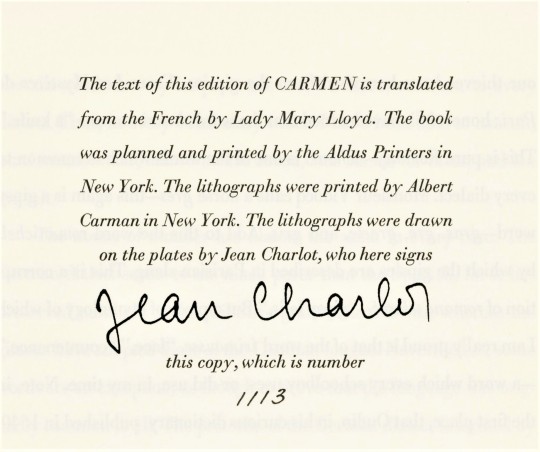

View more Limited Edition Club posts.
View more Fine Press Friday posts.
– Teddy, Special Collections Graduate Intern
#Fine Press Friday#Jean Charlot#Carmen#Prosper Merimee#Lithographs#color lithographs#Lithography#Limited Editions Club#LEC#Mexican Muralists#Murals#Mexican artists#American Artists#French Artists#Lady Mary Lloyd#Albert Carman#Aldus Printers#Fine press books#Linotype Bodoni#Bodoni type#Worthy Paper Company
59 notes
·
View notes
Note
i really love your idea of Ghoul for Jonathan it's so good
Thank you! Honestly there are a ton of good monster/cryptid Jonathan ideas out there alongside the 'maybe he's a diet vampire?' theories. The ghoul thing (as I've rambled about before) is born of the whole 'suddenly taking on corpsey coloring' + 'the religious stuff doesn't hurt him and he seems to be All About killing the Count' = 'being generally more eerie and unsettling' = 'freaky creature that hunts the (un)dead and has no known issue with Christian paraphernalia' = that boy seems a bit ghoulish!
And while Dracula absolutely stole a drink the last night in the castle, I've never been 100% on that being a basis for Jonathan being any kind of pseudo vampire born of the Count's nibbling. It'd mean he was tethered to Dracula too, and for a longer period than Mina. But Dracula is shitting bricks enough to run from Jonathan rather than fight him with the kukri in hand. So he clearly suspects something is up with this young man that's worth worrying about. Even when Jonathan had scuttled down the side of the house and was giving chase entirely solo ahead of the others, Dracula never turned to fight him.
Sounds like the kind of thing a walking corpse would do if he knew a ghoul was chasing him with his giant cutlery out.
...But, in hindsight, I can also see a different kind of Semi-Vampire!Jonathan in action here. One that's even more worrisome than Dracula's implied brand of vampire, the Romanian strigoi. Say, the same kind of pallid, washed-out vampires we see in, "The Family of the Vourdalak," by Alexei Tolstoy.
A story which involves vampires who are immune to traditional vampire destruction methods like being staked through the heart, et cetera, and focus obsessively on 'collecting' their loved ones and mercilessly slaughtering anyone else.
As an aside, the eponymous vourdalak vampire (note, more appropriately spelled 'wurdulac', being based on the Russian vampire, but we'll use vourdalak for the gothic lit spelling), Gorcha, is introduced carrying the severed head of a man he was hunting in the mountains.
As another aside, it's implied at the climax that this breed of vampire is bound to their homes/physical location they were turned, meaning the whole village of these washed out, corpse-eyed undead are only a threat to those who enter their territory. Or those who threaten to take away their loved ones.
As another other aside, in, "Dracula's Guest," Stoker's unused prologue to the novel, we see Jonathan come across an undead village in Munich. One that pours out a hoard of vampires from their graves in a wild tide. He blacks out during this; then he wakes to Dracula the Wolf laying on top of him just outside the village's boundary. The story mentions the Wolf licking his throat and the soldiers who find Jonathan notice a mark on his neck.
Now, this could be Dracula taking a first sip long before Mr. Harker gets to the castle; a token for his troubles in keeping the solicitor safe. And maybe that's all it was.
Or else those vampires were not strigoi at all, but something a touch more territorial. Sturdier. Obsessive. Corpse-colored. Driven by love and loathing at their greatest extremes.
The vourdalaks of the short story are shown to need full death for their turning. Jonathan, if he was purely hypothetically bitten by such a vampire before his rescue, would not be at risk of full conversion until the day he died. Certainly not enough to make him an anchored undead bloodsucker. ...But perhaps enough to start suffering some noticeable changes once certain Dracula-shaped stimuli began setting things off.
Which presents the lovely idea of Dracula not just running from a group of vampire hunters, but a group including one very pissed off even worse vampire-in-the-making whose whole deal is 1) Being nigh indestructible and riddled with super strength, 2) Wholly unstoppable when it comes to killing anyone who isn't a loved one; especially someone who just did a great big no-no by biting his wife, and 3) Isn't undead enough to be hampered by the territory rule.
Whether Jonathan's a Semi-Ghoul or a Guaranteed-to-Fuck-You-Up brand of Semi-Vampire, Dracula screwed up regardless, because either way he's now got Gothic Horror Jason Voorhees coming after his head.
#Dracula: You know what maybe it was a bad idea to become this guy's villain origin story after all#jonathan harker#monster jonathan harker#ghoul#vourdalak#wurdulac#vampire jonathan theory#dracula#dracula daily
104 notes
·
View notes
Text
Loki "God of mischief, lies...and stories!" a new unsurpassed action figure from Hot Toys



In the dramatic finale of Loki Season 2, the main character makes a monumental transformation, destroying the Temporal Machine and saving all the branching timelines. After becoming a living temporal loom for the Sacred Timeline, Loki evolves into a new god who is crucial to the stability of the multiverse.
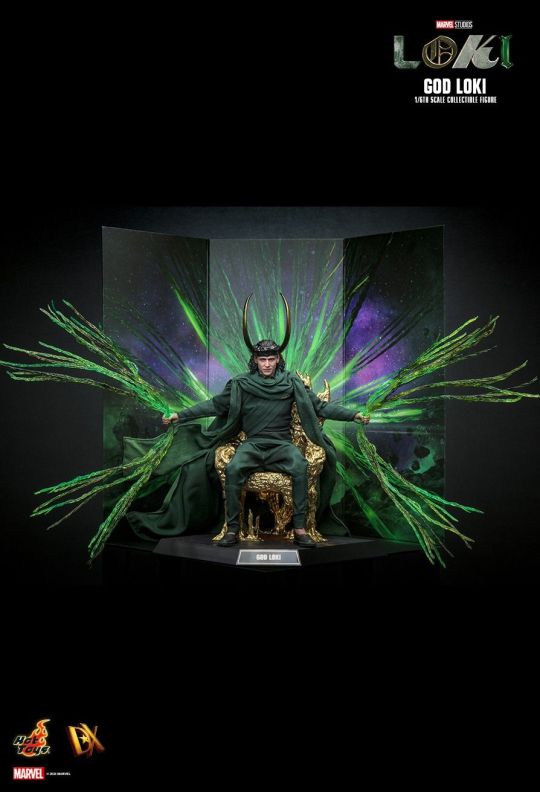
Hot Toys has captured this pivotal moment with the release of its 1/6 scale God Loki collectible figure inspired by the eponymous Season 2 Loki. The meticulously detailed action figure reflects Loki's new power and responsibility. Every aspect of this figure reflects high status, from the screen-accurate costume to the finely sculpted facial features.
4 notes
·
View notes
Text
All of Those Voices’: the Ugly Truth Behind Louis Tomlinson’s Rise to Stardom
THE TEEN MAG
By María Vieytez | 5 April 2023
A nostalgic embrace between four band members; longing words for deceased mother and sister; 23-year-old Louis Tomlinson drowning in doubt and uncertainty over a menacing future ahead as a solo artist. Such were the images publicly revealed for the first time on March 22nd, 2023 in worldwide cinemas as part of the feature-length documentary ‘All of Those Voices’. Such was the story former-One-Direction-member Louis Tomlinson had to share with his fans.
As Louies (the eponymous moniker Tomlinson’s fandom wears) gathered in different countries’ theatres to reminisce the good old days and get exclusive footage of One Direction and Louis’ backstage highlights, their rose-tinted expectations were forced away as they met with astonishing testimonies from his family, friends, and even himself, on what his journey toward his most recent album ‘Faith in The Future’ truly meant. What Louies once believed to be a straight-lined success story —certainly involving battles previously revealed by the media, but nonetheless not as brutal as those portrayed in the movie— encapsulated in an endearing hour-and-a-half film, resulted in being a moving insight and blow-to-the-face documentary, leaving many with a larger admiration of their icon’s strength, and some others with a torn heart, feeling deeply sorry for a man who now appears most vulnerable before their stricken eyes. Regardless of having received it with the former or latter perspective (or a mixture of both), the film was responsible for portraying the raw reality that comes with self-doubt as a rising star, an unexpected separation from a hit-wonder band, and the passing of a mother and a sister in a matter of two years; here’s what that looked like.
Taking his Own Direction
Tomlinson was a member of the British band One Direction, releasing five hit-albums, touring with the other four members for five years, selling over 70 million records worldwide, bringing home seven BRIT awards, seven AMAs, and creating what appeared the perfect $215 million business empire, until his world came down when the band decided to go on an “18-month” hiatus in 2016, and he was left stranded.
“I think the feeling I remember the most is a little bit of anger, because I didn’t want to go on a break. It didn’t just upset me, it shocked me. I wasn’t prepared for it... It was not as if in the five years I was in the band that I’d ever dreamt about being a solo artist. Not once, because I was so obsessed with us moving as a unit and being part of this team. I’ve spent all my years doing this, I don’t really see myself doing anything else … It was very easy for me to imagine Harry having a solo career, Liam having a solo career. It was harder for me to imagine myself doing that. It was like, what the fuck am I going to do?”
The band’s separation meant the start of a foreign era and the abandonment of what appeared to be a gleaming past. However, when presented with the reality of Louis’ role as part of the band, "All of Those Voices” exposed it to be near-as emotionally damaging as his aimless solo era proved to be. “I didn’t know at the start who I was within One Direction”, he explained. Louis revealed that during the band’s beginnings, he felt like an odd-fitting piece inside a collective, a sense further abetted by his lack of vocal feature on their first album. He would stream their songs from “Up All Night” —One Direction’s debut— and hear Harry Styles’ voice on the verses he’d spent hours recording, and soon realized, that his presence in the band was dismissed, making him feel unworthy of the fans’ praise. “When I think about how proud I am of 1d, I think of it as a collective”, Louis stated. He didn’t feel as if his work was an element of the band’s success until he began to take the lead in songwriting; then, his perspective changed. “If I think about what makes me the most proud as me, as an individual in that band, it’s definitely having the most writing credits”, and by “most”, he means more than 35 credits throughout the five years of One Direction’s production.

Although Louis’ personal testimony about One Direction in the film started off appearing as pitiable, the development and end of such, proved it to be an opportunity for growth and personal development, which allowed him to be, one of, if not the best lyricist amongst the boys’ solo careers, something shown initially in his album ‘Walls’, and most recently, in ‘Faith in The Future’. Nevertheless, Louis’ struggles were far from over, because only eleven months after 1D’s separation, he would suffer from great loss.
In December 2016, Tomlinson went on stage at The X Factor final for his debut solo television performance. As he put on a show with his single “Just Hold On” with Steve Aoki on the mixer, his gaze met with the ceiling, and his eyes gleamed as he sang through grief. Three days prior, Louis’ mother, Johanna Deakin, had died from leukemia at the age of 43. Still, Louis, with a heavy heart, and a soul yearning for a mother who, in life, had been a best friend, came on stage and got a standing ovation from the X-factor judges.
“The bottom line is, I didn’t want me mum feeling like what happened to her was going to jeopardize my career,” he recalls. “I had just got this feeling from her and the things that she was saying that I was just to keep doing what I’m doing, trying to keep strong. I got up on that day for her more than I did me.”
Louis’ resolution after his mother’s passing was to keep living “one life for the two of us”, as he expresses in his song ‘Two of Us’, featured as a eulogy for Johanna in the album ‘Walls’. The beginning of his solo career presented itself as an opportunity to make her proud, and such a feeling was transmitted to his entire family in the mourning process.
“She would not have allowed us to kind of sit and let stuff take over our life or let anything ruin our life,” Louis’ sister, Lottie, says in the film. “She brought us up to be strong and she brought us up to look after each other and just to get on with things.”
Louis' career was bound for success. In 2017, he released his single 'Just Like You', in which he portrayed the reality behind fame and the battles he shares with every ordinary person in the 21st century.
“The fans have seen so much and got to know us so well, but I’ve never really had a chance to be as honest like that with music. So that was really refreshing. It was just important for me to write a song that could humanize me as much as possible, and that the fans could really feel like I'm just like them – honest and vulnerable and real.”
'Just Like You' became Louis' tool to show that, as a human, he suffered from heartbreak just like his fans do. Little did he know, that soon, his heart would break even further, as he would lose his sister Félicité only two years after his mom's passing. A drug-use overdose would take away his 18-year-old sister's life after a relapse, setting Louis back in self-doubt and lost in his journey.
“We did a lot, me and Louis, working together to try and help Fizz,” Lottie says in the documentary. “Obviously, it didn’t work. I felt that, kind of, how could we not get her out of this? I can only imagine how he felt. I’m sure it was heightened, one because he’s a brother and two because he probably felt the responsibility from our mum.”
“Life always throws shit at you,” Louis said. “Yes, I’ve had maybe more to deal with than most people my age. But then, when the natural things happen in life, when things weren’t going my way, I couldn’t deal with it. It was like, but I’ve already had so much to deal with. When am I going to start winning?”
Nonetheless, Louis would yet again use this loss as an opportunity for growth, and a year later, he would release his first studio album, 'Walls'.
Recovery and new Album Releases
In 2020, things started to look up. Louis' debut album 'Walls' was released, including tracks such as 'Don't Let it Break Your Heart', in which he expressed that he was "driving down a one-way road to something better...what hurts you is gonna pass, and you’ll have learnt from it when it comes back. You'll be doing better". His growth was evident, and his album, a success.

Walls had gained over 780 million streams, and Louis was about to start the European leg of his world tour, when the pandemic hit, and he was forced to stay home. In the film, Louis shared that he spent time in quarantine between producing his most recent album, 'Faith In The Future', and visiting his son, Freddie, in Los Angeles.

Back to normality, Louis continued with his tour, in which he traveled from Europe to South and North America, in a self-discovery process and recovery, in which he was able to finally recognize his value and the weight of his voice. While he was on stage, his fans reassured him of the importance he held in their lives, and in his shows, he'd often say "I need you, you need me". Mid-tour, his second album was released, and as he got to perform it before the crowds, the love transmitted to him on the stage, became even more fervent.
"I've just spent so long working for this moment, and tonight was the pinnacle of that idea. It's like me life just flashed before my eyes on the stage... I just feel blessed, man"
'All Of Those Voices' placed the story of Louis' journey from a dark place to becoming one of the brightest stars in the music industry, on the big screen. From severe loss and crippling self-doubt, Louis rose above the challenges in his career, achieving over 180 million streams on his most recent album. His story became one that inspired millions of fans around the world, and, in retrospect, he's finally able to admit that "Yeah, I do feel like I deserve this, and that's probably the first time I've actually said that out loud".
30 notes
·
View notes
Note
Let's do this!! For the music meme:
2, 11, 12, 26, 29 please!
Hey hey! Thanks so much for the ask, and my apologies for taking a WEEK to answer this!
2. three last songs you listened to
I can't remember what I was listening to now, so imma cheat and say the last 3 songs in my previous ask.
11. three favourite songs from movie or TV series soundtrack
This is so hard! You have to understand, I used to collect soundtracks, so I have a LOT of favorites!
No list of soundtrack greats could omit John Williams. The man is a legend. My favorite of his is probably the Raiders of the Lost Ark March. Today, anyway, lol.
Chariots of Fire by Vangelis was one of my first soundtracks, and still a favorite.
The third is the best TV track of all time, the theme for Doctor Who by Murray Gold.
12. three favourite songs from video games
First sentimental favorite goes to the Magic Meadow (Erana's Peace) theme for Quest for Glory by Mark Seibert. This guitar cover of it is rather lovely.
The Secret of Monkey Island is a classic, and one of my favorite games ever. One of the many reasons for that is the soundtrack, which I heard on my first playthrough on PC speaker, and THEN (*glorious*) on my brand new sound card, a Sound Blaster Pro. 😂 There are a ton of versions of the main theme out there, but I had to post the version that's closest to what I listened to back then.
Last one, also from a classic & favorite game, the title screen theme from Okami. If you haven't played it, the game is available on multiple platforms, and is well worth it, like a Japanese watercolor come to life.
26. three favourite non-English songs
Answered here.
29. three songs that influenced you most (some songs change or save lives)
Tracy Chapman's entire eponymous album was one of the first to make me really think about the way other people think and live. Gotta give it to the (still relevant) first song, Talkin' Bout a Revolution.
I was a militant atheist for a long time, mainly out of a sense of self defense. Dar Williams changed my mind about the possibility of reconciling with the faithful in The Christians and the Pagans. I'm married to an Episcopalian who was a religious studies major, so it must have worked. 😅
Everything Possible by Fred Small is the lullaby of affirmation and encouragement we all need to hear, especially if we didn't hear it when we were younger. Lyrics below the cut.
We have cleared off the table, the leftovers saved
Washed the dishes and put them away
I have told you a story and tucked you in tight
At the end of your knockabout day
As the moon sets its sails to carry you to sleep
Over the midnight sea
I will sing you a song no one sang to me
May it keep you good company
[Chorus]
You can be anybody you want to be
You can love whomever you will
You can travel any country where your heart leads
And know I will love you still
You can live by yourself, you can gather friends around
You can choose one special one
And the only measure of your words and your deeds
Will be the love you leave behind when you're gone
There are girls who grow up strong and bold
There are boys quiet and kind
Some race on ahead, some follow behind
Some go in their own way and time
Some women love women, some men love men
Some raise children, some never do
You can dream all the day never reaching the end
Of everything possible for you
Don't be rattled by names, by taunts, by games
But seek out spirits true
If you give your friends the best part of yourself
They will give the same back to you
You can be anybody you want to be
You can love whomever you will
You can travel any country where your heart leads
And know I will love you still
You can live by yourself, you can gather friends around
You can choose one special one
And the only measure of your words and your deeds
Will be the love you leave behind when you're gone
The love you leave behind when you're gone
#music#fun with memes#favorite songs#three favorite songs meme#about me#songs that changed my life#video game soundtracks
5 notes
·
View notes